Milwaukee Uses Different Voting Machines for Early Voting
Use of touchscreens instead of paper ballots intended to improve accessibility, avoid need for 327 unique ballots.
Voters electing to cast their ballot early at the Milwaukee City Hall complex will encounter a different voting machine than what voters will find on election day.
Since the fall 2018 election, the Milwaukee Election Commission has used touchscreen voting machines for early voting that print a final, filled out ballot versus paper ballots.
Instead of drawing lines to select candidates on a long, paper ballot, the ExpressVote machine has a touch screen interface that shows only a single race at a time. After making selections in each race a final screen presents a list of selected candidates. Voters then use the machine to print a ballot with barcodes and a human-readable list of selected candidates that is submitted to poll workers for election day tabulation.
“No inventory of pre-printed ballots is necessary. The equipment also includes accessibility provisions that allow a person with a disability an easier experience in marking their ballot,” said election commission executive director Neil Albrecht.
The city purchased 25 machines in 2018 at a price of approximately $3,200 each after learning of their successful early implementation in Madison and West Allis, Albrecht said. The machines have been certified for use by both the federal Election Assistance Commission and Wisconsin Elections Commission. They’re manufactured by Omaha-based Election Systems & Software, which also sells other election equipment used by the city.
For the likely high-turnout fall Presidential election the city plans to have eight early voting sites. Albrecht said more machines will be acquired so they can be used at each site.
But there are no plans to replace the paper ballot process. “Eventually, they will replace the AutoMark, the accessible voting equipment used at polling places. They will not replace paper ballots or the DS200 tabulators,” said Albrecht.
How is accuracy ensured? “Like all other voting equipment, the City of Milwaukee does a pre-test of the equipment once election coding is complete to verify accuracy prior to each election,” said Albrecht. Ballots are not electronically submitted by the new machines. The printed ExpressVote ballots are scanned alongside the traditional paper ballots, ensuring an audit trail in the event of a recount.
Early voting for the Spring Primary ends Friday, February 14th. The election is Tuesday, February 18th.
Specific early voting dates have not been announced for the Spring Election and Presidential Primary on Tuesday, April 7th.
If you think stories like this are important, become a member of Urban Milwaukee and help support real, independent journalism. Plus you get some cool added benefits.
City Hall
-
Council Blocked In Fight To Oversee Top City Officials
 Dec 16th, 2025 by Jeramey Jannene
Dec 16th, 2025 by Jeramey Jannene
-
Latest Effort to Adopt New Milwaukee Flag Going Nowhere
 Dec 3rd, 2025 by Jeramey Jannene
Dec 3rd, 2025 by Jeramey Jannene
-
After Deadly May Fire, Milwaukee Adds New Safety Requirements
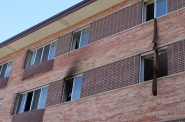 Dec 2nd, 2025 by Jeramey Jannene
Dec 2nd, 2025 by Jeramey Jannene


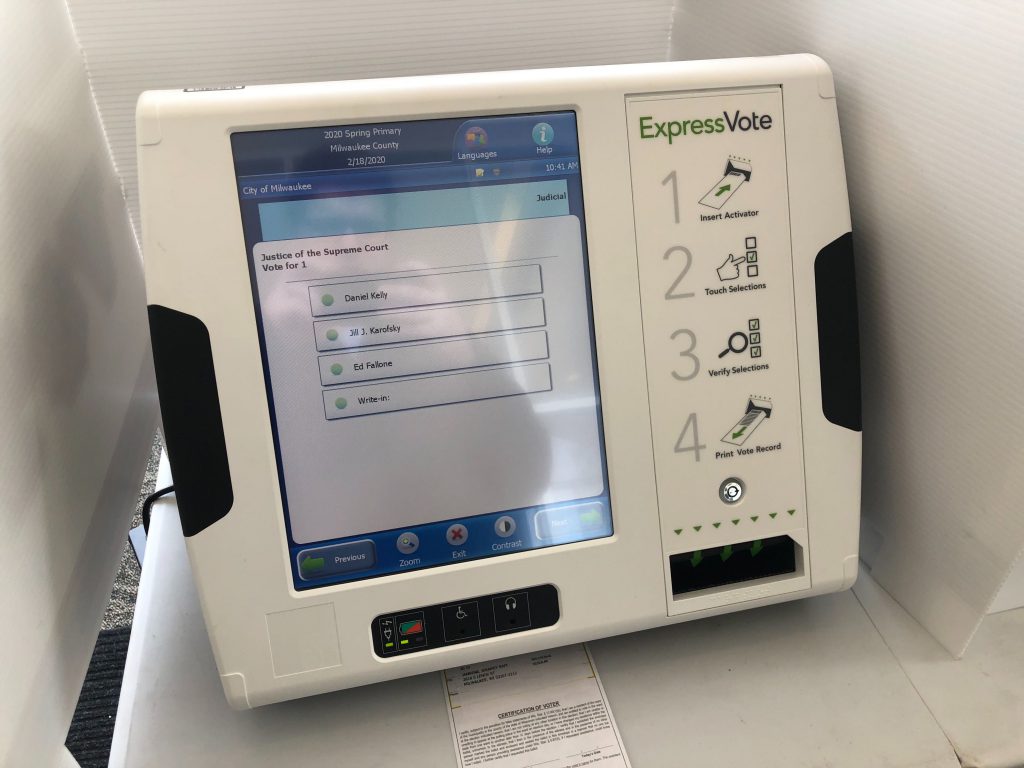
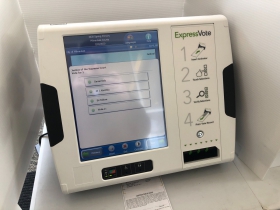
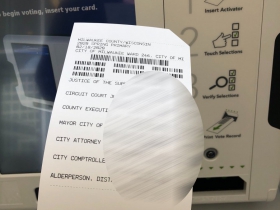
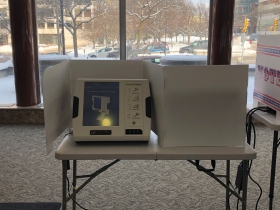



















Wow, I’m sold ! Electronic voting is so cool and convenient. (But whatever you do don’t go to the Wikipedia page for Omaha-based Election Systems & Software and especially don’t read the “Remote Access Controversy” section of the article. And especially don’t rear the sentence “By installing remote access software allowing the machines to be accessed via the internet, the machines are vulnerable to being “hacked” remotely, allowing the counting to be altered surreptitiously, or malware to be installed to affect an election result. “Motherboard”, the site that originally published the story, called the remote access software installation “the worst decision for security short of leaving ballot boxes on a Moscow street corner”. Why would E S & S, be allowed to sell anything related to voting?)
Kind of off topic and not related to Election Systems & Software or Milwaukee in any way but easier “accessibility” for handicap voters was also one of the reasons LA County gave for its switch to a $300 million, publicly owned, unverifiable electronic voting system. FYI…Los Angeles County is being sued by Beverly Hills because the system only displays four candidates in any given race at a time, which means that voters could hit the NEXT button to go to the next race without ever seeing all of the voters in the current contest. To see the other candidates you have to hit the MORE button not the NEXT button. The machines have also failed to meet 40 “California Voting System” standards and have been known to “flip” votes without the voter noticing. But LA is going to use them anyway. Technology is cool ! Can’t wait for Super Tuesday voting results showing Bloomberg the winner in CA!!!
Duane, as I read your Wikipedia article, the problem to which you allude does NOT apply to voting machines, but rather to machines that are used to count and tabulate the votes. Does Milwaukee use ES&S counting equipment? (I don’t know.)
ANY automated method of counting votes should be audited by randomly choosing a few polling locations and then re-counting their votes by hand. If any discrepancy is found (and, as far as I know, this has never happened), then all polling locations should be re-counted by hand.
As long as voting machines produce an auditable paper trail (these do) and as long as random polling places are audited after the initial vote count, I don’t see a problem.
A machine of any purpose that is connected to the internet it is susceptible to being hacked.